#Grand Duchess marie of Mecklenburg-Schwerin
Explore tagged Tumblr posts
Text

“Grand duchess Elena vladimirovna could have married king albert of belgium if it wasn't for her mother Grand duchess maria palvona. This would have created an powerful alliance with Russia and Belgium but because her mother was such an snob and desperate to marry her daughter off it was nearly impossible for her daughter to get married off. Due to her mother making her dsnobbish as her but oh well.” - Submitted by Anonymous
9 notes
·
View notes
Text
𝙲𝚑𝚘𝚌𝚘𝚕𝚊𝚝𝚎 𝚌𝚊𝚛𝚍𝚜 𝚘𝚏 𝚁𝚘𝚢𝚊𝚕 𝚠𝚘𝚖𝚎𝚗 👑✨🍫
(𝙿𝚊𝚛𝚝 ��� 𝚘𝚞𝚝 𝚘𝚏 𝟺)
~~~~~~~~~~~~~~~~~~~~~~~~~~~~~~~~~~~~~~~~~~~~~~~

Princess Mary, Countess of Harewood and Princess Royal.
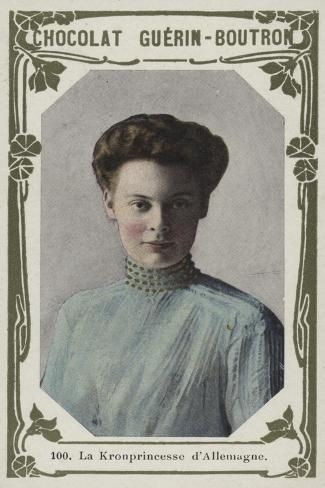
Crown Princess Cecilie of Prussia, née Duchess Cecilie of Mecklenburg-Schwerin.
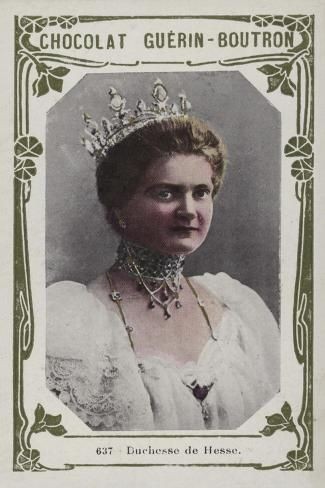
Grand Duchess Eleonore of Hesse, née Princess Eleonore of Solms-Hohensolms-Lich.
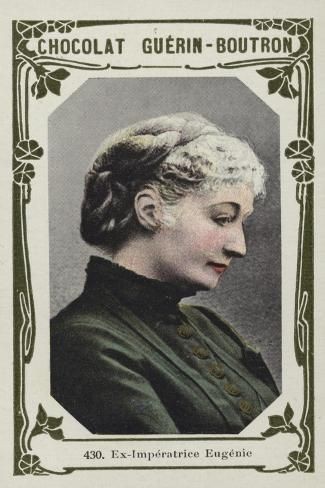
Empress Eugenie of France, née Eugenie de Montijo.
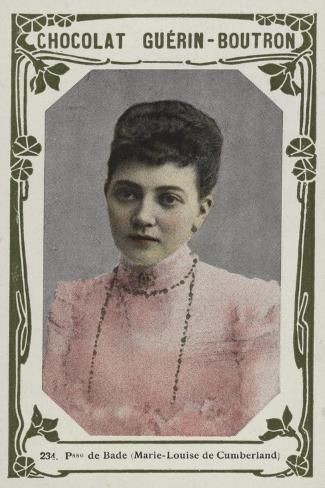
Princess Marie Louise of Baden, née Princess Marie Louise of Hanover.

Grand Duchess Olga Nikolaevna

Grand Duchess Tatiana Nikolaevna
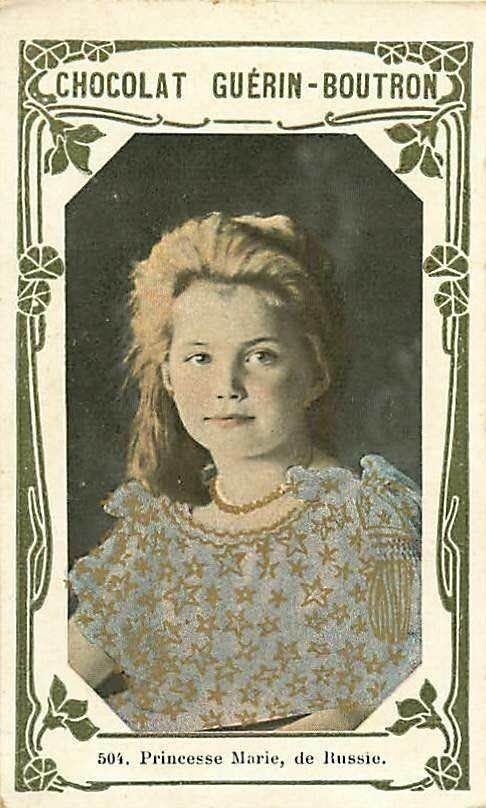
Grand Duchess Maria Nikolaevna
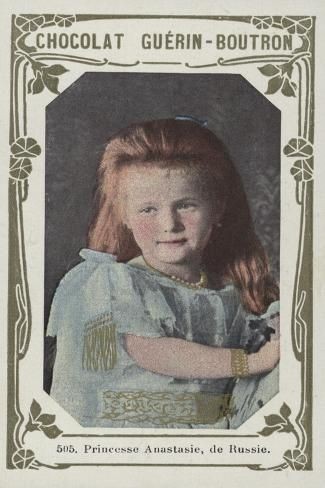
Grand Duchess Anastasia Nikolaevna
#princess mary#mary princess royal#duchess cecilie of mecklenburg-schwerin#crown princess cecilie of prussia#grand duchess eleonore of hesse#princess eleonore of solms-hohensolms-lich#empress eugenie#eugenie de montijo#princess marie louise of hanover#princess marie louise of baden#grand duchess olga nikolaevna#grand duchess tatiana nikolaevna#grand duchess maria nikolaevna#grand duchess anastasia mikhailovna#chocolate cards
14 notes
·
View notes
Text

Friedrich Franz Michael IV, Grand Duke of Mecklenburg-Schwerin with his children: Friedrich Franz, Hereditary Grand Duke of Mecklenburg-Schwerin Duke Christian-Ludwig of Mecklenburg-Schwerin Duchess Thyra Anastasia Alexandrine Marie-Louise Olga Cecilie Charlotte Elisabeth Emma of Mecklenburg-Schwerin
German vintage postcard
#tarjeta#louise#postkaart#sepia#cecilie#christian-ludwig#friedrich#duke#duchess#michael#schwerin#carte postale#olga#hereditary#charlotte#ansichtskarte#children#grand#ludwig#german#briefkaart#mecklenburg#elisabeth emma#elisabeth#photo#photography#emma#postal#postkarte#alexandrine marie-louise olga cecilie
3 notes
·
View notes
Text

Anna Elisabeth Auguste Alexandrine, Duchess of Mecklenburg-Schwerin was half sister to Grand Duchess Marie Pavlovna of Russia (Grand Duchess Vladimir), cousin to Victoria, Ella, Irene and Alix of Hesse, and aunt to princess Cecilie of Mecklenburg-Schwerin (future crown princess of Prussia). Anna died when she was 16.
"My grandfather’s second marriage was terminated by the early death of the Grand Duchess, formerly Princess Anna of Hessen-Darmstadt, when her first child, a daughter, was born. Her daughter too died at an early age, when she was only sixteen ; she was worshipped in our family almost like a young saint".
The memoirs of the Crown Princess Cecilie
"...there was one daughter, Anna, who married the Grand Duke of Mecklenburg-Schwerin as his second wife, and died in childbirth. They had only one little girl, Annchen, who died at 16. This was a very delicate and nervous child. We used to play with her when she paid her yearly visit to my grandparents but we were so much more robust than she and so wild that my grandmother used always to forbid us exciting her".
"Recollections: The Memoirs of Victoria Marchioness of Milford Haven".
16 notes
·
View notes
Text






Royal Birthdays for today, May 26th:
Mehmed III, Ottoman Emperor, 1566
Aloys II, Prince of Liechtenstein, 1796
Augusta Reuss of Köstritz, Grand Duchess of Mecklenburg-Schwerin, 1822
Elizabeth Mikhailovna, Duchess of Nassau, 1826
Mary of Teck, Queen of the United Kingdom and Empress of India, 1867
Frederik X, King of Denmark, 1968
#mehmed iii#mary of teck#frederik X#aloys ii#Augusta Reuss of Köstritz#Elizabeth Mikhailovna#royal birthdays#long live the queue
9 notes
·
View notes
Text


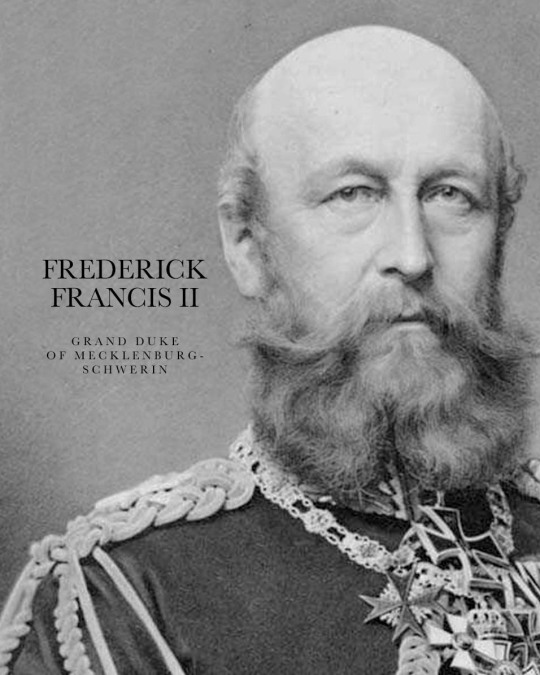
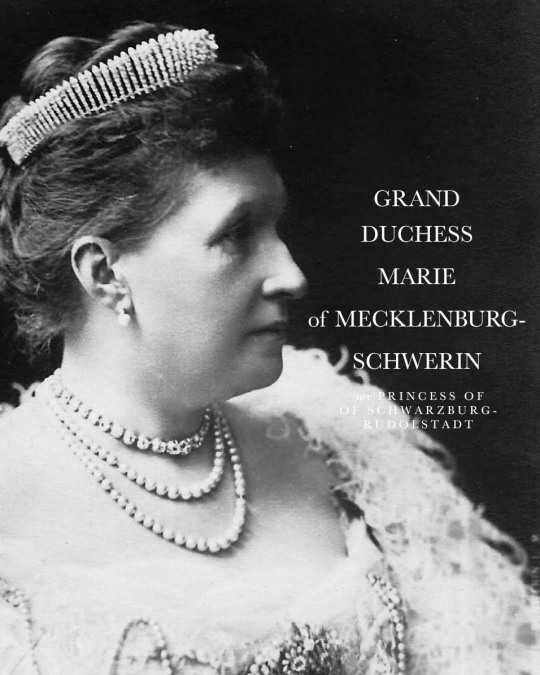
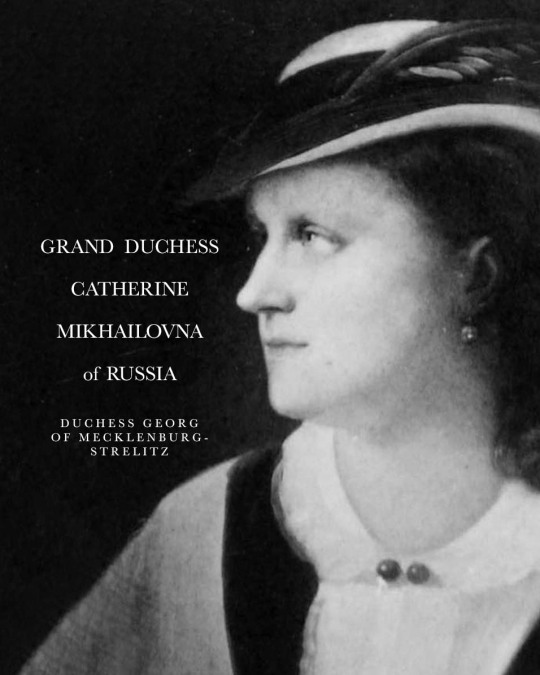

GODPARENTS OF GRAND DUCHESS ELENA VLADIMIROVNA
Grand Duchess Elena Vladimirovna, the youngest child and only daughter of Grand Duke Vladimir Alexandrovich of Russia and his German-born wife Grand Duchess Maria Pavlova (née Duchess of Mecklenburg-Schwerin), was born on 29 January (O.S. 17) 1882 in Saint Petersburg. She was christened on 12 March in the Grand Palace Church of Catherine Palace, Tsarskoe Selo. Her godparents were:
ALEXANDER III, EMPEROR OF RUSSIA - her paternal uncle, who had succeeded the Russian throne just a year prior, was named as one of her godparents. He was highly reactionary in domestic affairs and reversed some of the liberal reforms of his father, Alexander II. He was present at his niece's christening.
FREDERICK FRANCIS II, GRAND DUKE OF MECKLENBURG-SCHWERIN - her maternal grandfather was another of her godparents. A Romanov by descent (being a great-grandson of Tsar Paul), he held the rank of Prussian general and was also a Russian General Field Marshal.
MARIE, GRAND DUCHESS CONSORT OF MECKLENBURG-SCHWERIN - her step-grandmother was also named as her godparent. The third wife of Frederick Francis II, whose marriage produced four children, including Prince Hendrik, consort of Queen Wilhelmina of the Netherlands and father of Queen Juliana.
GRAND DUCHESS CATHERINE MIKHAILOVNA OF RUSSIA - A first cousin of her grandfather, Catherine was one of the two godparents present at her christening. She was the wife of Duke Georg August of Mecklenburg-Strelitz, and a great philanthropist and many of the organisations she supported and helped to create still operate today.
ALEXANDRINE, GRAND DUCHESS OF MECKLENBURG-SCHWERIN - her maternal great-grandmother, a Prussian-born princess was also her godparent. She was a sister of Empress Alexandra Feodorovna-consort of Nicholas I-who was Elena's great-grandmother on her father’s side. In 1822, she married Paul Frederick, Hereditary Grand Duke of Mecklenburg-Schwerin (himself, a grandson of Russian Tsar Paul). Their marriage was generally considered unhappy, he was a military man who had little time for or interest in his wife and family. Alexandrine, by contrast, was a devoted mother who tenderly raised her children and actively cultivated their cultural pursuits.
Source
23 notes
·
View notes
Text
Grand Duchesses at the Coronation of Nicholas II and Alexandra Feodorovna
Nicholas II and his consort Empress Alexandra, were crowned on Tuesday, 14 May (O.S., 26 May N.S.) 1896, in Dormition Cathedral in the Moscow Kremlin. The magnificence of the occasion was never again seen in Russia. The Grand Duchesses were in full regalia. Here are two great photographs of them.

Above:
Sitting: Grand Duchess Alexandra Iosifovna (who had been present at the coronation of Alexander III); sitting on the floor at her knees is Princess Olga of Wurttenberg; sitting next to Alexandra Iosifovna is Princess Louise Margaret, Duchess of Connaught
Back Row Standing from Let to Right: Grand Duchess Vera Konstantinovna, Grand Duchess Anastasia of Mecklenburg-Schwerin, Grand Duchess Maria Pavlovna (the elder), Grand Duchess Elena Vladimirovna, Grand Duchess Elizabeth Mavrikievna, and Princess Elena of Saxe-Altenburg

Above:
In the center of this group, is Grand Duchess Marie Alexandrovna, (daughter of Tzar Alexander II, wife of Queen Victoria's second son Alfred, Duke of Saxe Coburg and Gotha, who is standing behind her.)
On the right side of Grand Duchess Marie Alexandrovna, is her daughter Victoria Melita, Princess of Saxe-Coburg and Gotha. Sitting to the left of her mother is the Crowned Princess of Romania, Marie (same name as her mother; known by the family as Missy). Her husband the Crowned Prince of Romania, Ferdinand, is standing slightly to the side, behind Missy.
Next to Ferdinand of Romania is Ernest Louis, Grand Duke of Hesse and By Rhine, husband of Victoria Melita at the time and brother of the Empress being crowned, Alexandra Feodorovna. To the right of Victoria Melita is her brother, Prince Alfred of Saxe-Coburg and Gotha who died at age twenty-four.
#Grand Duchess Vera Konstantinovna#Grand Duchess Alexandra Iosifovna#Grand Duchess Anastasia Mikhaelovna#Grand Duchess Anastasia of Meklenburg-Schewrin#Grand Duchess Marie Alexandrovna#Grand Duchess Elizabeta Mavrikievna#Grand Duchess Elena Vladimirovna#Princess Victoria Melita#Marie#Crown Princess of Romania#Missy#Princess Elena of Saxe-Altenburg#Princess Louise Margaret Duchess of Connaught#Princess Olga of Wurttenberg#imperial russia#romanov dynasty#Nicholas and Alexandra#Nicholas II#Coronation
29 notes
·
View notes
Text






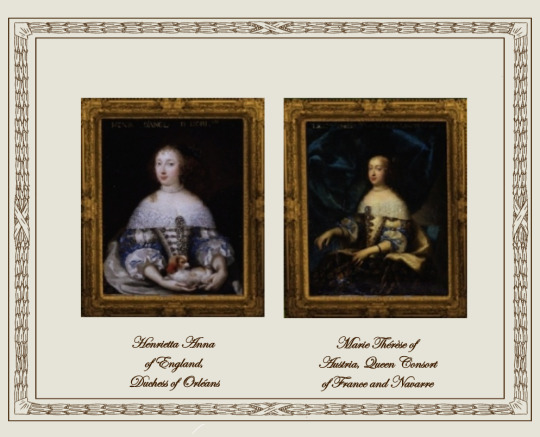
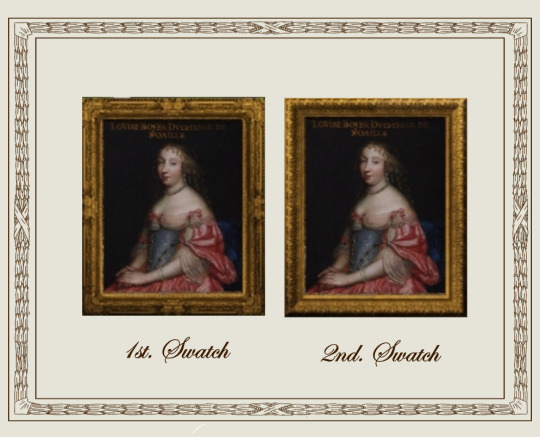
Louis XIV's Gallery of Beauties
A retexture by La Comtesse Zouboff — Original Mesh by @thejim07
This set of 20 portraits was comissioned by the king himself in the 1650s to Charles and Henri Beaubrun (except for a portrait of Henrietta Anna of England, Comissioned to Nicolas Mignard) The portraits comprises the queen, royal princesses and ladies of the court. They hanged at the king's appartments at Versailles. In the 1670s the paintings were progressively relegated to the king's minor residences, but in 1837, Louis-Philippe, King of the French turned Versailles into a museum and rejoined the paintings, in the Louis XIV Rooms, where they remain.
The set includes 20 portraits, with the original frame swatches, fully recolorable. The portraits are of:
Anne Genèvieve de Bourbon, Duchess d'Estouteville and Longueville
Françoise-Athénaïs de Rochechouart (later, Marquise de Montespan)
Anna Martonozzi, Princess of Conti
Anne Louise Boyer, Duchess of Noailles
Anne Marie Gonzaga, Countess Palatine
Anne de Rohan-Chabot, Princess de Soubise
Catherine Henriette d'Harcourt, Duchess d'Arpajon
Catherine de Neuville, Countess d'Armagnac
Charlotte Catherine de Gramont, Proncess of Monaco
Charlotte Isabelle Angélique de Montmorency-Bouteville, Duchess of Mecklenburg-Schwerin
Elizabeth of Orléans, Duchess of Guise and Joÿeuse
Françoise Madeleine d'Orléans (née de Valois) Duchess of Savoy
Françoise Mignot, Mareschalle of l'Hospital
Françoise de Neufville, Duchess of Chaulnes
Gabrielle-Louise de Saint-Simon, Duchess of Brissac
Henrietta Anna of England, Duchess of Orléans
Madeleine-Charlotte d'Albert-d'Ailly, Duchess of Foix
Marguerite Louise d'Orléans, Grand Duchess of Tuscany
Marguerite-Louise-Suzanne de Béthune-Sully, Countess of Gyche
Marie Thérèse of Austria, Queen Consort of France and Navarre
Found under Decor > Paintings for 940 §
Retextured from the "portrait of Anne Marie Louise d'Orléans", found here
Table, torcheres and floor by @thejim07
Rest of the decor by @joojconverts

Drive
(Sims3pack | package)
(Useful tags)
@joojconverts @ts3history @ts3historicalccfinds @deniisu-sims @katsujiiccfinds
-------------------------------------------------------
#the sims 3#ts3#sims 3 cc#portrait#s3cc#sims 3#sims 3 download#sims 3 cc finds#palace of versailles#sims 3 decor#wall decor
43 notes
·
View notes
Photo
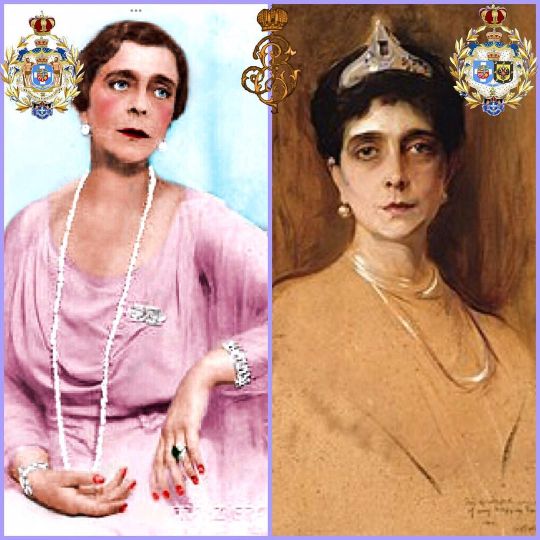
66 years since the death of HI&RH Princess Helena of Greece and Denmark Grand Duchess Elena Vladimirovna of Russia (29 January 1882 – 13 March 1957). Princess Helena was the only daughter and youngest child of Grand Duke Vladimir Alexandrovich of Russia and Duchess Marie of Mecklenburg-Schwerin. Her husband was Prince Nicholas of Greece and Denmark and they were both first cousins of Emperor Nicholas II of Russia. They had 3 children : 1)Princess Olga of Greece married Prince Paul of Yugoslavia; 2)Princess Elizabeth of Greece married Count Karl Theodor zu Toerring-Jettenbach, son of Duchess Sophie in Bavaria and scion of an old and rich Bavarian mediatized family; and 3)Princess Marina of Greece married the Prince George, Duke of Kent in November 1934.She was also first cousin of Queen Juliana of the Netherlands and Alexandrine of Mecklenburg-Schwerin, Queen consort of Denmark and the grandmother of Prince Edward, Duke of Kent, Princess Alexandra, the Honourable Lady Ogilvy, and Prince Michael of Kent. Princess Elena became a widow early in 1938, as Prince Nicholas suffered a heart attack and died suddenly. She remained in Greece throughout the Second World War, dying there in 1957 and she is buried in the Royal Cemetery in Tatoi Royal Estate close Athens. #royal #royalty #royals#greekroyals#greekroyalfamily#danishroyals#danishroyalfamily#queenannemarie#crownprincessmariechantal#princessmariechantal#crownprincepavlos#princepavlos#kingconstantine#princessmarieolympia#princessolympia#princeconstantinealexios#princenikolaos#princesstatiana#princeachileasandreas#princeodysseaskimon#princearistidesstavros #princephilipos #princessnina #princesstheodora#queenofgreece #princessofgreece#princeofgreece #dukeofsparta#kingofgreece https://www.instagram.com/p/CpuKKvLoaa9/?igshid=NGJjMDIxMWI=
#royal#royalty#royals#greekroyals#greekroyalfamily#danishroyals#danishroyalfamily#queenannemarie#crownprincessmariechantal#princessmariechantal#crownprincepavlos#princepavlos#kingconstantine#princessmarieolympia#princessolympia#princeconstantinealexios#princenikolaos#princesstatiana#princeachileasandreas#princeodysseaskimon#princearistidesstavros#princephilipos#princessnina#princesstheodora#queenofgreece#princessofgreece#princeofgreece#dukeofsparta#kingofgreece
5 notes
·
View notes
Photo
Duchess Cecilie Auguste Marie of Mecklenburg-Schwerin (20 September 1886 – 6 May 1954) was the last German Crown Princess and Crown Princess of Prussia as the wife of Wilhelm, German Crown Prince, the son of Wilhelm II, German Emperor.
Cecilie was a daughter of Frederick Francis III, Grand Duke of Mecklenburg-Schwerin and Grand Duchess Anastasia Mikhailovna of Russia. She was brought up with simplicity, and her early life was peripatetic, spending summers in Mecklenburg and the rest of the year in Southern France. After the death of her father, she traveled every summer between 1898 and 1904 to her mother's native Russia. On 6 June 1905, she married German Crown Prince Wilhelm. The couple had four sons and two daughters. Cecilie, tall and statuesque, became popular in Germany for her sense of style. However, her husband was a womanizer and the marriage was unhappy.
After the fall of the German monarchy, at the end of World War I, Cecilie and her husband lived mostly apart. During the Weimar Republic and the Nazi period, Cecilie lived a private life mainly at Cecilienhof Palace in Potsdam. With the advance of the Soviet troops, she left the Cecilienhof in February 1945, never to return. She settled in Bad Kissingen until 1952 when she moved to an apartment in the Frauenkopf district of Stuttgart. In 1952, she published a book of memoirs. She died two years later.

Crown Princess Cecilie of Prussia, 1908 by Caspar Ritter (German-born Swiss, 1861–1923)
#history#art#clothing#german empire#kingdom of prussia#grand duchy of mecklenburg-schwerin#germany#mecklenburg-vorpommern#brandenburg#potsdam#cecilienhof#ww1#german revolution of 1918-1919#duchess cecilie of mecklenburg-schwerin#wilhelm german crown prince#wilhelm ii#frederick francis iii#grand duchess anastasia mikhailovna#caspar ritter#house of mecklenburg
467 notes
·
View notes
Text

Dowager Grand Duchess Marie of Mecklenburg-Schwerin and her eldest grandchild Hereditary Grand Dukd Nikolaus of Oldenburg, late 1890s.
#dowager grand duchess marie of mecklenburg-schwerin#grand duchess marie of mecklenburg-schwerin#hereditary grand duke nikolaus of oldenburg#oldenburg#mecklenburg-schwerin#german royalty#german royal#1890s#late 1890s
14 notes
·
View notes
Photo

Grand Duchess Maria Pavlovna the Elder.
#Maria Pavlovna the Elder#Grand Duchess Maria Pavlovna#kokoshnik#romanov#russian royalty#imperial russia#royalty#marie of mecklenburg-schwerin
49 notes
·
View notes
Photo


Bridesmaids of Duchess Alexandrine of Mecklenburg in the day of her wedding with Prince Christian of Denmark, later King Christian X. Cannes, 1898
Photo 1, from L to R
Princess Olga of Hannover, Grand Duchess Helena Vladimirovna of Russia, Duchess Cecilie of Mecklenburg Schwerin , ?
Photo 2, from L to R
Princess Thyra of Denmark, Princess Alexandra of Hannover, Princess Marie of Hannover , ?
#Antique#vintage#Victorian#1890s#Victorian fashion#19th century#bridesmaid#Wedding#Royalty#Grand Duchess Alexandra of Mecklenburg Schwerin#Duchess Marie of Baden#Princess Olga of Hannover#Grand Duchess Helena Vladimirovna of Russia#Crown Princess Cecilie of Prussia
347 notes
·
View notes
Text
Aquamarine Tiaras
Grand Duchess Alexandra of Mecklenburg-Schwerin’s Aquamarine Tiara by Fabergé, circa 1904
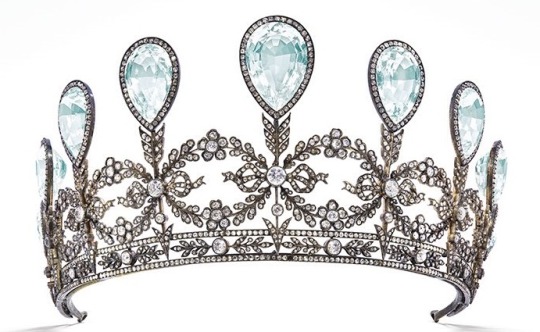
Hesse Aquamarine Tiara

Aquamarine & Enamel Tiara by Georges Fouquet, circa 1910
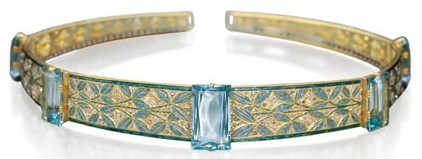
Russian Aquamarine Kokoshnik Tiara by Koch, circa 1910
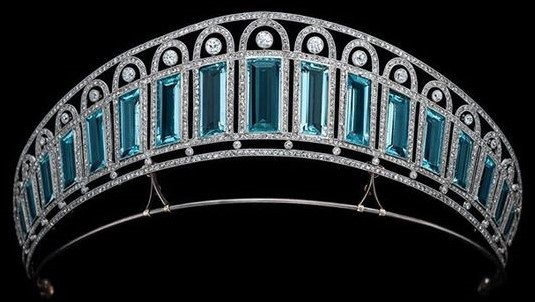
Hesketh Aquamarine Tiara by Cartier, circa 1910

Princess Olga Paley's Aquamarine Aigrette Tiara by Cartier, 1912
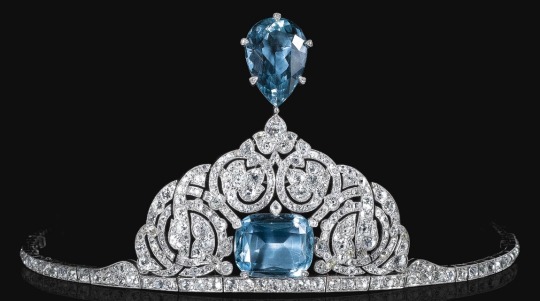
Aquamarine Tiara by Mellerio, 1929
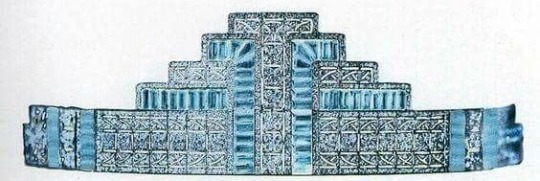
Aquamarine Tiara by Cartier, 1937
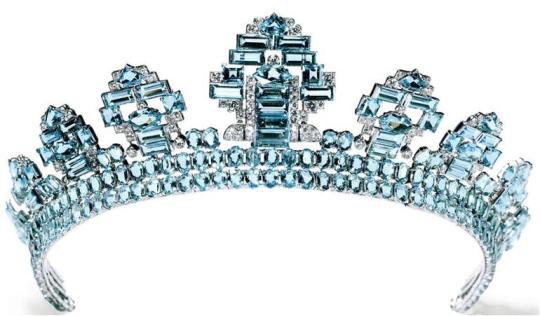
Queen Elizabeth of the United Kingdom's Aquamarine Pine Flower Tiara by Cartier, 1938

Queen Elizabeth II of the United Kingdom's Brazilian Aquamarine Tiara by Garrard, 1957/1971
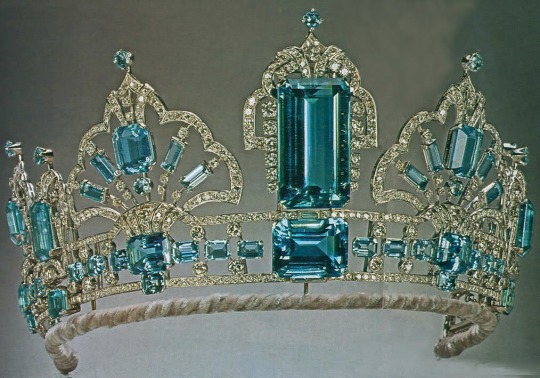
Princess Isabella de Ligne de la Trémoïlle's Aquamarine Tiara by Holemans, 2009
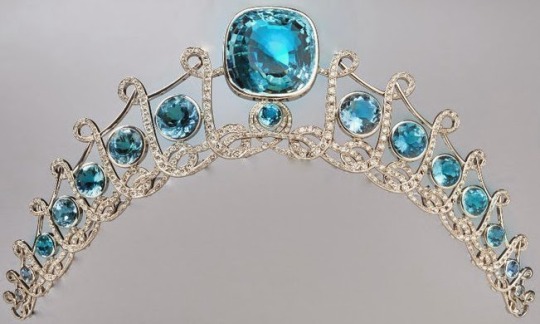
Marie Antoinette Tiara by Lydia Courteille, 2019

Tiara Materials 15 of ∞
#tiara materials#aquamarine#tiara#Faberge#Cartier#Georges Fouquet#Mellerio#Holemans#Lydia Courteille#Garrard#Koch
726 notes
·
View notes
Photo

Marie Louise of Mecklenburg-Schwerin, Duchess of Saxe-Altenburg (31 March 1803 - 26 October 1862)
#marie louise of mecklenburg-schwerin#marie luise friederike alexandrine elisabeth charlotte catherine#duchess of saxe-altenburg#daughter of frederick louis hereditary grand duke of mecklenburg-schwerin#married george i duke of saxe-altenburg#history#women in history#19th century
2 notes
·
View notes
Photo

Grand Duchess Maria Pavlovna of Russia, 1900s.
#Grand Duchess Maria Pavlovna of Russia#1900s#Romanov#Miechen#Duchess Marie of Mecklenburg-Schwerin#Imperial Family#imperial russia
39 notes
·
View notes